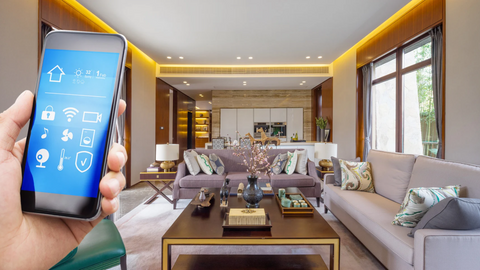June 22, 2023
Smart homes have revolutionised our lives, offering convenience, efficiency, and connectivity like never before.
However, with the myriad of devices and technologies available, it's easy for homeowners to make mistakes when setting up and managing their smart homes.
In this comprehensive guide, we'll explore the top 10 common mistakes made by homeowners with smart homes and provide practical solutions to rectify them.

You can ensure a smooth and rewarding smart home experience by avoiding these pitfalls.
One of the most common mistakes homeowners make is using weak passwords or failing to enable two-factor authentication on their smart home devices.
This leaves their network vulnerable to hacking and unauthorised access.
Use strong, unique passwords for each device and regularly update them.
Enable two-factor authentication whenever possible.
Segment your smart home devices on a separate network to isolate potential security breaches.
Homeowners often mix and match devices and platforms without considering their compatibility. This can lead to frustrating experiences and limited functionality.
Before purchasing smart home devices, research their compatibility with your existing ecosystem or hub.
Opt for devices that support popular ecosystems like Amazon Alexa, Google Assistant, or Apple HomeKit to ensure seamless integration.
A weak or inadequate Wi-Fi signal can cause connectivity issues, affecting the performance of your smart home devices.
Ensure proper router placement for optimal coverage.
Consider investing in Wi-Fi extenders or mesh systems to expand coverage throughout your home.
Regularly update your router's firmware to benefit from the latest security patches and performance improvements.

Failing to update device firmware leaves your smart home vulnerable to security vulnerabilities and compatibility issues.
Regularly check for firmware updates for your smart home devices.
Enable automatic updates whenever possible to ensure you're always running the latest software versions.
With a growing number of smart devices, it's easy to lose track of which device is which, leading to confusion and difficulty in managing them effectively.
Develop a consistent naming convention for your devices, ensuring they are easily identified.
Group devices by room or functionality within your smart home hub for seamless control.
Homeowners often overlook privacy settings, inadvertently sharing sensitive information or allowing excessive data collection.
Regularly review and customise privacy settings for your smart home devices.
Disable features or permissions that are unnecessary or invade your privacy.

Failing to back up smart home configurations and data can lead to significant setbacks in case of device failure, system crashes, or accidental resets.
Regularly back up your smart home configurations and settings, either through cloud services or local storage.
Record essential information, such as device serial numbers, warranty details, and customer support contacts.
Homeowners sometimes create overly complex control systems, requiring multiple steps or apps to operate their smart home devices.
Streamline your control systems by consolidating devices within a single hub or ecosystem.
Utilise automation routines and voice command to simplify everyday tasks.
Smart homes offer excellent energy-saving potential, but homeowners often neglect to leverage these features, resulting in higher energy bills.
Take advantage of smart thermostats, smart plugs, and energy monitoring devices to track and reduce energy consumption.
Create automation routines to optimise energy usage based on occupancy and schedule.
When faced with technical issues, homeowners may struggle to troubleshoot and resolve problems effectively, leading to frustration and wasted time.
Familiarise yourself with device manuals, online forums, and customer support resources for troubleshooting guidance.
Join online communities or attend local workshops to learn from experienced smart homeowners.
Q: What should I do if my smart home devices stop responding or lose connectivity?
A: Start by ensuring your network is functioning correctly. Restart your router and devices if needed. If the issue persists, refer to the device's troubleshooting guide or contact customer support for assistance.
Q: How often should I update my smart home devices?
A: It's advisable to check for updates at least once a month and apply them promptly. Regular updates enhance device performance, security, and compatibility.
Conclusion
Avoiding common mistakes when managing your smart home is essential to enjoy its convenience and efficiency fully.
By addressing issues such as network security, device compatibility, Wi-Fi coverage, firmware updates, and device organisation, you can optimise your smart home experience.
Remember to prioritise privacy, establish backup and recovery plans, simplify control systems, and leverage energy-saving features.
With these solutions in place, you'll transform your smart home into a seamless, secure, and rewarding haven that enhances your daily life.
Comments will be approved before showing up.
November 08, 2025
Transform your daily routine with the perfect balance of function and style. Discover how an LED bathroom mirror enhances lighting, elevates your décor, and brings calm clarity to every morning. From energy-efficient design to effortless elegance, learn why this modern essential is redefining bathroom lighting and self-care spaces.
May 30, 2025
Transform your home with 5 wellness design upgrades you can make without renovating. Easy, affordable fixes for a healthier space.
May 24, 2025
Discover 5 overlooked wellness design elements that impact your sleep, stress, and energy. Make smarter home upgrades that improve daily life.

